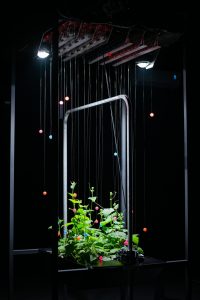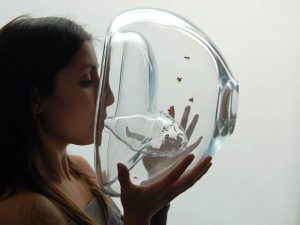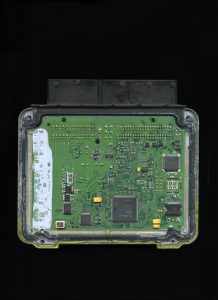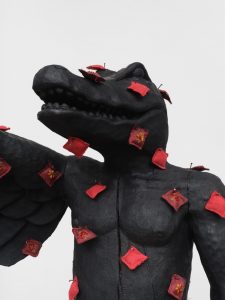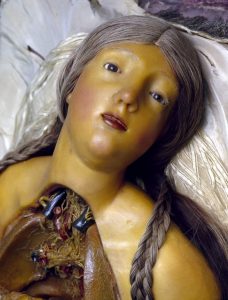British artist Paul Fryer has a spectacular exhibition, In Loving Memory, at the Guido Costa Projects gallery in Turin.
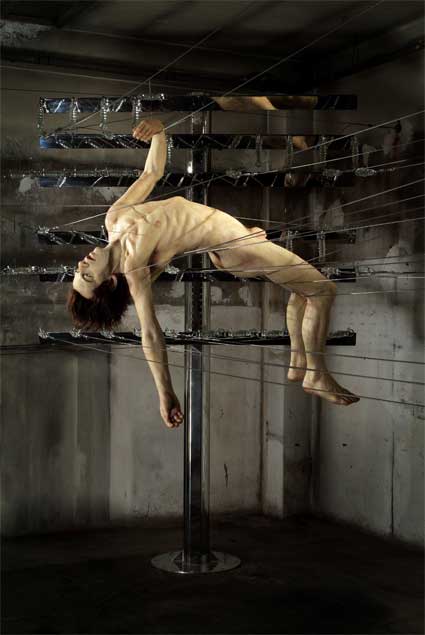 Martyr, 2007, stainless steel, wax, Plexiglas, human hair, Tesla coils, computer, light system
Martyr, 2007, stainless steel, wax, Plexiglas, human hair, Tesla coils, computer, light system
The show features only one art piece: Martyr, created specifically for the gallery. This large scale installation represents the synthesis of Paul Fryer’s research into the origins of technology and the labyrinths of science. The actual elements used to construct the artwork – stainless steel, wax and glass – testify to this synthesis.
The origins of the work are bound up in an event which made news at the end of the 19th century. A Western Union lineman, John Feeks, employed alongside others to hang the thousands of kilometres of wire connecting one building to another and providing the city of New York with electricity and information. Freeks was accidental electrocuted and his corpse corpse dangled for hours in a tangle of wires above the Manhattan streets, to the horror of thousands of onlookers. His fate became symbol of the perils of technological advancement, a martyr of progress, and one of the most famous victims of the electromechanical revolution at the end of the 19th century.
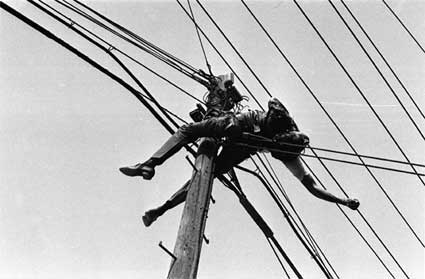
What i found striking is that i was sure i had seen a photography of Freeks death somewhere. After some research i realized that what i had seen what a picture similar to the installation. But it wasn’t in the US, it was in Mexico. Jesus Bazaldua Barber, a telecommunications engineer, was electrocuted by more than 60,000 volts whilst installing a new phone line. Toluca, Mexico in 1971 and Enrique Metinides “immortalized” the scene.
Fryer’s installation is a sort of modern monument to the forgotten workers and their anonymous contribution to supplying the electricity to power modernity.
Like Ron Mueck, Fryer uses wax to render anatomical details. However, the reason why the artist chose wax was not to re-create life but rather because it the material that best communicates the rigidity of death.
I took many pictures.
Previously at GCP: The Velocity of Thought.
On view until 31 January 2008, at the Guido Costa Projects gallery in Turin.

